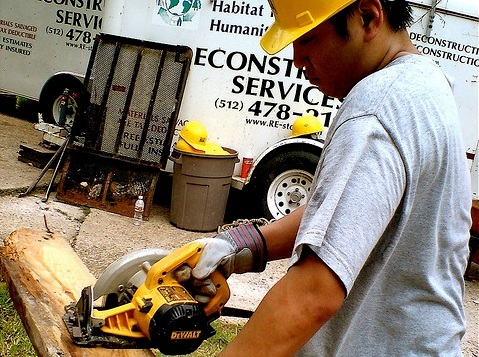
Among the lingering effects nonprofit organizations face from the economic downturn is a growing reliance on their volunteers, and a corresponding need to help protect volunteers from the effects of accidents, injuries, or other unplanned incidents.
Since the beginning of the 2008 recession, budgetary constraints have reduced the ability of nonprofits to hire staff members and forced organizations to rely more heavily on volunteer assistance. As a result, many nonprofits today face an evolving volunteer force, both in terms of their increased importance to the organization and the potential risks they represent.
Organizations that ignore their moral and fiduciary obligations to protect volunteers may face potential negative publicity that damages their reputation and possibly impedes their ability to attract future volunteers and donors.
In contrast, effective risk management strategies can help protect a nonprofit’s volunteers as well as the organization, while also serving as an effective volunteer recruitment tool.
|
Important Risk Management Considerations The following considerations can help nonprofit organizations improve their risk management efforts and protect volunteers:
|
Greater Reliance
For many organizations, the recession changed not only the number of volunteers who are providing time and effort, but also the types of work they do. In many instances, more volunteers are performing maintenance or manual labor activities that traditionally have been reserved for staff members. This shift creates a stronger need to provide volunteers with adequate safety training and equipment.
As another effect, high unemployment rates expanded the pool of potential volunteers, and a growing number of unemployed (or underemployed) people interested in remaining active and contributing to their community are looking for volunteer opportunities.
While having a broader larger number of volunteers to choose from is, on the whole, a positive development for nonprofits, it can present risk management issues, since many of these unemployed workers may also lack health, accident, or disability insurance. Their activities could potentially increase the financial or insurance-related risks for organizations if something happens to a volunteer who doesn’t have adequate first-party coverage.
Addressing the Risk
One of the most critical risk management steps a nonprofit can take is trying to make sure they have the right volunteer in the right job. This alignment should begin during your earliest discussions with a potential volunteer as you review the applicant’s background and motivation for wanting to get involved.
Front-line volunteers effectively serve as the face of a nonprofit organization, and their actions reflect directly on the organization and its management techniques and effectiveness.
With technology playing a larger role in the daily operations of nonprofits, cybersecurity needs to be included on an organization’s risk management to-do list. If a volunteer’s activities require them to use the organization’s IT resources, the nonprofit needs to implement appropriate security measures, such as requiring the use of strong passwords, changing those passwords on a routine basis, and considering whether the use of web filtering software to block inappropriate content is needed.
Volunteer roles can run the gamut from performing routine clerical tasks to providing aid or rebuilding homes after a natural disaster. While those examples represent vastly different risk management challenges, they share characteristics including a need to train volunteers about their responsibilities and to think about the potential risks.
Safety Training is Critical
Along with the specific tasks that go along with a volunteer’s duties, training should also address any potential safety concerns. For example, someone donating time to an animal shelter must be taught how to protect himself or herself while feeding or handling an animal, as well as how to interact with the public effectively.
This training should include partnering a new volunteer with an experienced colleague to provide on-the-job guidance. This teaming can help reduce the risk of “rookie mistakes” or volunteer nervousness that can lead to accidents or injuries while also reinforcing the organization’s commitment to volunteer safety and protection.
Volunteers should also be trained about the importance of notifying staffers about, or cleaning up, potential hazards like spilled water, which can lead to slip-and-fall injuries.
Sign up for our free newsletters
Subscribe to NPQ's newsletters to have our top stories delivered directly to your inbox.
By signing up, you agree to our privacy policy and terms of use, and to receive messages from NPQ and our partners.
Similarly, sending volunteers for first aid or CPR training can also provide important risk management benefits if a fellow worker, staff member, or patron is injured at a nonprofit’s facility or during a sponsored event.
Incident Response Planning
It is also critical to develop an incident response plan so volunteers know what to do if something goes wrong. For instance, a volunteer should be prepared to act if a child becomes separated from his or her parents. Steps such as securing exits, broadcasting the child’s description over a public address system, and other measures should be handled quickly and efficiently to improve the effectiveness of the response while reducing confusion and potential panic.
Similarly, the animal shelter mentioned earlier should develop plans for incidents such as an animal getting loose or other potential hazards.
Creating and reviewing protocols for unplanned incidents can help mitigate negative effects on patrons or the organization, while also reassuring volunteers in advance that prudent steps have been taken to protect them and the organization’s patrons.
Promoting Recruitment
Developing effective risk management strategies can also provide advantages as organizations discuss their mission and management approach with volunteers or applicants.
Potential volunteers with questions about working for an organization will likely be reassured if they understand how much “just in case” thinking has taken place, and that appropriate measures have been taken to mitigate (or respond to) potential hazards or other risk exposures.
A nonprofit’s risk management strategies reflect on its organizational abilities and professionalism, and prospective volunteers will likely want to know the organization will protect them and react quickly if something goes wrong.
Conversely, failing to train volunteers effectively or to develop response plans can create reputational challenges for the organization if an untrained worker is injured. Even an incident that isn’t the organization’s fault can lead to unpleasant questions about safety, training and potential negligence, and can alter the public’s and donors’ perception of the nonprofit.
Post-Disaster Concerns
If a volunteer is dispatched to an area affected by a natural disaster, specific risk management issues need to be addressed. Along with the appropriate skills, experience or training, workers performing construction tasks should be provided with hard hats, eye protection, respirators and other appropriate safety equipment.
Workers providing more general tasks or support services, or distributing food or medicine, also need to be protected and provided with access to medical care, both en route and at their destination. For example, outbreaks of cholera or other communicable diseases are common following many disasters. Volunteers should also be provided with any vaccinations that may be necessary before they travel internationally.
Depending on the location, arranging in advance for potential medical evacuation insurance coverage and services is also a prudent step in protecting volunteers serving in locations where effective medical care may be lacking, or the local infrastructure has been damaged.
Nonprofits should also be aware of the political situation at locations they may be serving. Trip cancellation and medical or political evacuation coverage may be helpful for people going to areas subject to political or economic instability.
Whether volunteers are working in soup kitchens or traveling overseas on humanitarian trips, they are exposed to the possibility of injury. Providing accident coverage alongside the organization’s general liability coverage can help mitigate these fiduciary and reputational risks.
Adequate safety training, incident planning and insurance coverage are important tools to help nonprofits attract, protect and retain valuable volunteers while enhancing organization’s strength and ability to serve its communities.











